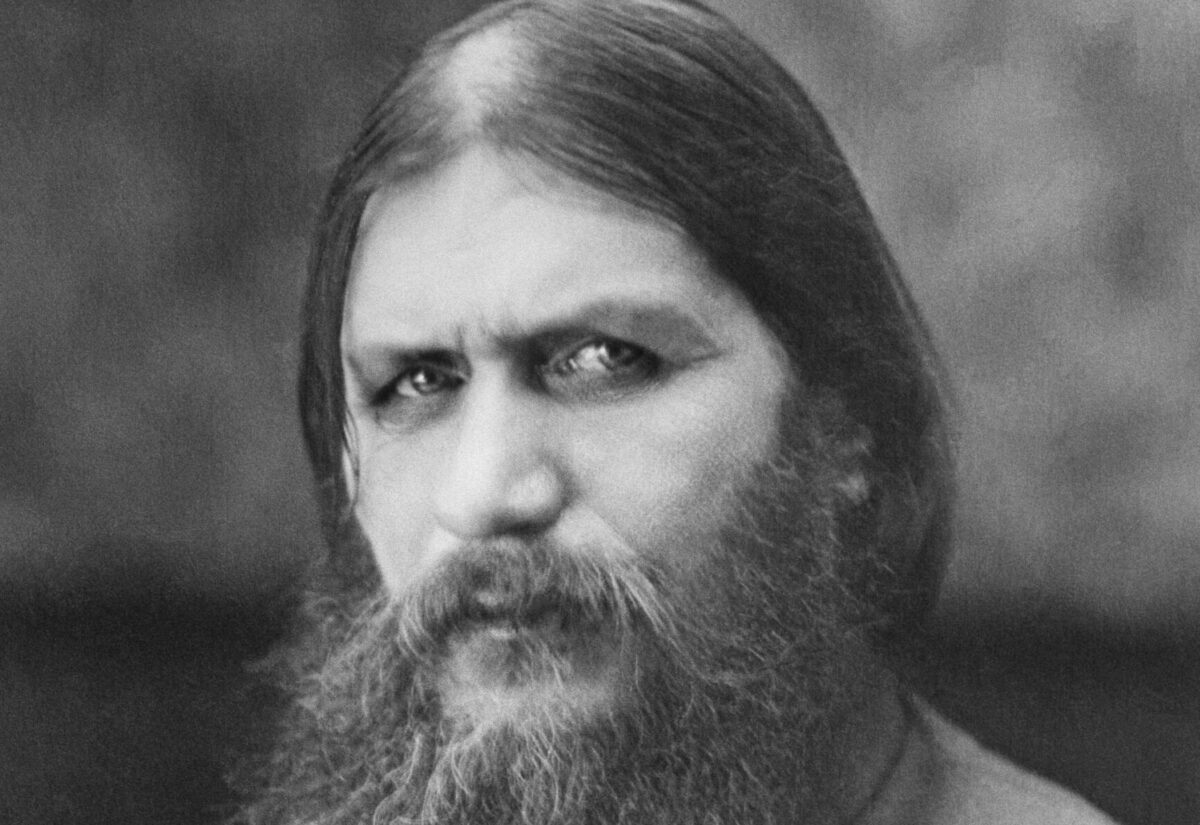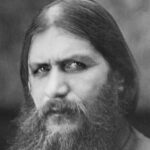 Public Domain
Public DomainThroughout history, the idea of faking one’s own death has held a certain allure, whether as a means to escape debt, elude justice, dodge assassination, or simply vanish from the public eye. While some cases are shrouded in myth and speculation, a surprising number involve well-documented evidence or credible theories that certain historical figures might have orchestrated their own disappearances. These aren’t just the stuff of crime thrillers or conspiracy blogs—they’re stories that continue to intrigue historians, biographers, and anyone drawn to the blur between reality and legend. Here are some of the most fascinating figures who are believed to have faked their own deaths, or at least tried to.
Grigori Rasputin
The Russian mystic and advisor to Tsarina Alexandra has long been the subject of strange and often sensationalised rumours. Officially, Rasputin was assassinated in 1916—poisoned, shot multiple times, beaten, and finally drowned by a group of nobles who feared his influence over the royal family. It was a death so dramatic it read like fiction. However, conspiracy theories quickly sprang up, claiming Rasputin had somehow escaped the murder attempt and gone into hiding.
His apparent ability to survive extreme abuse before finally dying fuelled these suspicions. Despite widespread agreement among historians that he did indeed die that night, Rasputin’s semi-mythical reputation and the sheer brutality of the murder continue to spark speculation that he may have staged his own demise, or that someone helped him vanish before the final blow ever landed.
B. Traven
The true identity of B. Traven, author of the 1927 novel “The Treasure of the Sierra Madre,” remains one of the great literary enigmas. Several researchers and scholars have proposed that he was actually a German anarchist named Ret Marut who was active during the German Revolution and later disappeared. Some believe Marut faked his death in the aftermath of the political chaos and resurfaced in Mexico under a new identity.
Traven himself never clarified the matter, insisting that his writing, not his personal history, should be the focus of attention. His reluctance to be photographed, his evasive correspondence, and the tangled web of documents and pseudonyms left in his wake have only deepened the mystery. If he did stage his own death, he succeeded in crafting a new persona that has outlived the mystery of his origins.
Lord Lucan
Richard John Bingham, the 7th Earl of Lucan, became a household name in Britain after the murder of Sandra Rivett, his children’s nanny, in 1974. Lucan was the prime suspect, but after calling his mother to collect the children, he disappeared. His car was later found abandoned with traces of blood.
For decades, stories of sightings have emerged from across the globe—New Zealand, India, Australia, and even parts of Africa. The British press reported on supposed leads for years. In 2016, he was officially declared dead, but many believe Lucan escaped abroad and lived under an alias with help from wealthy friends. His disappearance remains one of Britain’s most enduring mysteries.
John Stonehouse
A more definitively confirmed case, British MP John Stonehouse staged his own death in 1974, leaving a pile of clothes on a Miami beach to suggest he had drowned. In reality, he fled to Australia, using false identities and attempting to start a new life with his mistress.
Stonehouse had financial troubles and was under investigation for fraud. His plan unravelled when Australian authorities, initially suspecting he might be Lord Lucan, uncovered the deception. Stonehouse was extradited and sentenced to seven years in prison. While not exactly successful, his attempt remains one of the most notorious cases of a public figure trying to erase himself from history.
Ferdinand Waldo Demara
Known as “The Great Impostor,” Demara didn’t fake his death permanently, but he did use the tactic more than once to evade arrest and reinvent himself. Over the years, he posed as a monk, a prison warden, a naval surgeon, and even a college professor. His stint as a ship’s doctor during the Korean War, despite no medical training, was so audacious that it made headlines.
Demara’s life was so surreal it was adapted into a 1961 film starring Tony Curtis. Although he was often exposed and occasionally jailed, his blend of charm, confidence, and opportunism made him one of history’s most unforgettable chameleons.
Alexander I of Russia
When Czar Alexander I died in 1825, rumours began circulating that he had faked his death to become a wandering monk. Just a few years later, a man known as Feodor Kuzmich appeared in Siberia. He was reclusive, spiritually inclined, and well-educated—qualities that seemed oddly fitting for a former monarch.
Over the years, similarities between Alexander and Kuzmich, including handwriting analysis and testimonies, led many to believe they were the same person. The theory was never officially confirmed, but it gained support even among the Russian royal family. In a final twist, the Russian Orthodox Church canonised Kuzmich in 1984, adding a layer of sanctity to the tale.
Elvis Presley
The death of Elvis Presley in 1977 didn’t end his story. Instead, it launched decades of speculation that “The King” had gone underground. Fans pointed to inconsistencies in the death certificate, alleged sightings, and a sense that Elvis had grown weary of his fame and obligations.
Some believed he entered witness protection after uncovering criminal activities. Others suggested he simply wanted a break from the spotlight. From impersonators to TV interviews, the myth of Elvis living incognito has taken on a life of its own. Though no credible evidence has ever surfaced, the idea that Elvis is still out there remains one of pop culture’s most enduring legends.
Ken Kesey
In 1966, author Ken Kesey faked his own suicide to avoid prosecution for drug charges. He left a staged car accident and a note, then fled to Mexico with help from his countercultural collective, the Merry Pranksters. Kesey was a central figure in the psychedelic movement, and his vanishing act was both a political protest and an elaborate prank.
Eventually, he returned to the U.S. and served a short jail sentence. Still, his temporary disappearance added to his anti-establishment mystique. It also cemented his place as more than just a writer—he was a symbol of rebellion in an increasingly conservative political climate.
Jean de La Valette (rumoured)
Jean Parisot de La Valette, Grand Master of the Knights Hospitaller and hero of the Great Siege of Malta in 1565, died three years later under somewhat murky circumstances. While officially buried in Malta, tales have circulated that he may have staged his death to escape political intrigue and retire peacefully.
Some versions of the story suggest he travelled under an alias to North Africa or the Middle East. Though widely dismissed by historians, the legend has endured, perhaps because it captures the blend of honour, secrecy, and sacrifice associated with knightly orders at their peak.
Henry Hudson
The famed English explorer disappeared in 1611 after a mutiny during his search for the Northwest Passage. Cast adrift in a small boat with his son and a few loyal crew members, he was presumed dead. However, with no bodies ever found and only the mutineers’ accounts surviving, speculation about his fate lingers.
Some theorists suggest Hudson may have reached land and integrated with local Indigenous groups. While far-fetched, it’s not impossible. Indigenous oral histories sometimes reference unusual visitors from the sea. Without definitive proof, Hudson’s end remains as mysterious as his discoveries.



